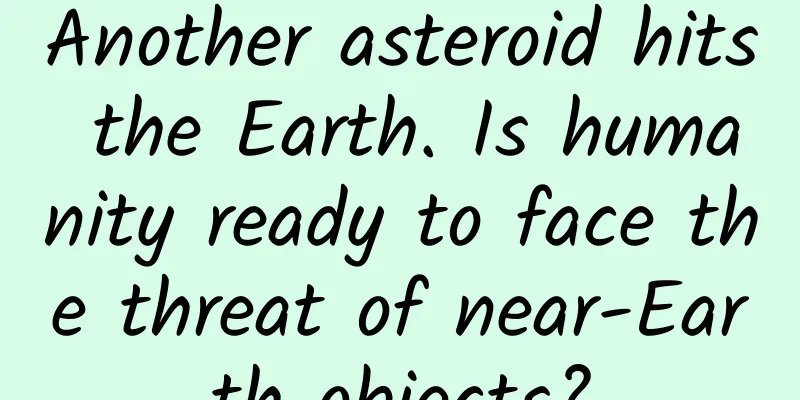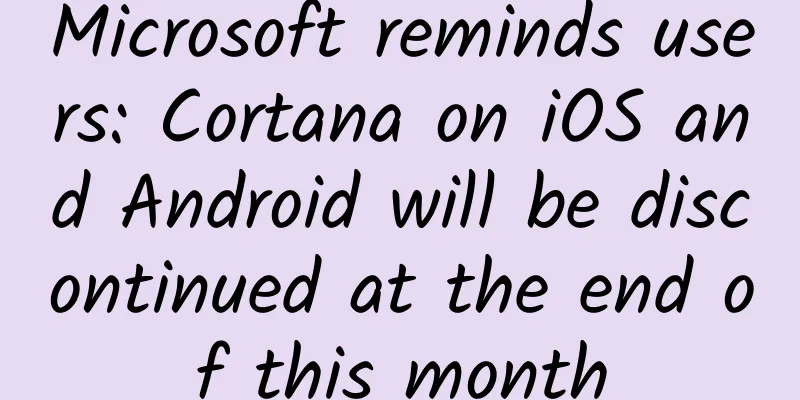Another asteroid hits the Earth. Is humanity ready to face the threat of near-Earth objects?

|
At 4:27 a.m. local time on November 19, 2022, most people were still in deep sleep on the shores of Lake Ontario on the border between the United States and Canada. A near-Earth asteroid codenamed 2022 WJ1 came quietly, broke into the atmosphere at an extremely low angle, and passed through the Lake Ontario area with a bright tail. Under the action of ablation and pressure, it disintegrated and exploded in the atmosphere. Many people were awakened by the huge vibration in their sleep. Local surveillance cameras recorded the scene of the asteroid crossing the sky and illuminating the night. In fact, this is the sixth time that humans have been warned in advance of a near-Earth asteroid impacting the earth. The asteroid fell on the shore of Ontario under the close monitoring of astronomers. Video 1 - Near-Earth asteroid passes by the CN Tower in Toronto (Video source: EarthCam) Part 1 Event Review Three hours before the impact, the Catalina Sky Survey, located on the top of Mount Lemmon in Arizona, was conducting routine surveys of near-Earth asteroids. The Catalina Sky Survey consists of three optical telescopes: 1.5-meter and 0.7-meter wide-field survey telescopes (international numbers G96 and 703, respectively) are used to discover unknown asteroids, while the 1.0-meter narrow-field telescope (international number I52) is used to track and measure newly discovered asteroids. The Catalina system is the most efficient telescope system in the world for discovering near-Earth asteroids, and has discovered more than half of the world's near-Earth asteroids to date. Of the five previous successful warnings of near-Earth asteroid impacts on the Earth, four were discovered by the Catalina Sky Survey. The main task of sky surveys is to discover unknown near-Earth asteroids, some of which may pose a serious threat to the Earth. For example, in 2013, a near-Earth asteroid with a diameter of about 18 meters disintegrated and exploded over the Chelyabinsk region of Russia, injuring nearly 1,500 people. Figure 1: Animated picture of the Chelyabinsk incident (Image credit: NASA) It is not easy to search for asteroids in the vast night sky. Because these faint asteroids may come from any direction in the sky, and the area of the sky that the telescope can see at a certain moment is like a beam of flashlight light. Therefore, it is necessary to divide the vast night sky into several "grid" areas, and then use a flashlight to illuminate these grid "areas" one by one to obtain an observation image. There will be many stars in the image, some bright stars and some faint stars. If you are lucky enough, there may also be planets, dwarf planets, asteroids and comets. But at this time, astronomers cannot tell which targets are asteroids, because these targets are almost stationary in the short tens of seconds illuminated by the "flashlight". Astronomers need to use the "flashlight" to illuminate these grid "areas" one by one again at intervals, such as about 10 minutes. Compare the pictures taken of the same area of the sky at different times, and after removing interference such as stationary stars and background noise, you can find near-Earth asteroids in a "moving" state. At 4:53 GMT on November 19 (00:53 local time on the 19th, about 3.5 hours before the asteroid impact), the Catalina Sky Survey System G96 telescope captured the asteroid for the first time, and took three more images at 5:02, 5:10, and 5:18. After processing the four images, Catalina system observer David Rankin discovered this asteroid that may hit the Earth. Due to the experience of successfully discovering Earth "impactors" four times before, the staff on duty keenly judged that this might be an asteroid that will hit the Earth. The Catalina system immediately terminated its daily sky survey program and used the G96 telescope to take four consecutive images of the asteroid at 5:35, every 11 seconds, to improve the accuracy of the orbital measurement of the asteroid. The new data confirmed that the asteroid would hit the Earth with a high probability. The operators then aimed all three telescopes at the asteroid for precise tracking observations. The Farpoint Observatory in Kansas and the Shasta Valley Observatory in California also tracked and observed the asteroid. Video 2 Asteroid images taken by the Catalina Sky Survey (Video source: Catalina Sky Survey) At 6:12 GMT (2:12 a.m. local time, about 2.2 hours before the asteroid hits), after the G96, 703 and I52 telescopes each completed four observations, the Catalina Sky Survey confirmed that the probability of this near-Earth asteroid hitting the Earth will reach 100%, and also measured the absolute magnitude of the asteroid to be 33.5, which means that the asteroid may be less than 1 meter in size - an asteroid of this size will burn up in the atmosphere and will not pose any threat to the ground. These data were synchronized to the website of the International Planet Center, and NASA's "Scout" system also analyzed the data. Figure 2 The Scout system analysis shows that the probability of this asteroid hitting the Earth is 100% (Image source: NASA) At 6:20 GMT (2:20 a.m. local time, about 2 hours before the asteroid impact), Richard A. Kowalski, chief operations specialist of the Catalina system, sent a message to the Minor Planet Mailing List (MPML) - the Catalina Sky Survey has discovered an asteroid C8FF042 that looks like it will hit the Earth, calling on observers around the world to observe the asteroid to obtain as much data as possible. The MPML mailing list brings together astronomy experts and enthusiasts from different parts of the world. American astronomer Bill Gray predicted that the asteroid will fall over Brantford on Lake Ontario on the border between the United States and Canada at 8:26:55 GMT. Some people tried to track it and found that the asteroid moved too fast for the telescope to keep up with it, but the telescopes numbered H36 and T12 still successfully "caught" the asteroid. Some people began to post messages on social platforms, calling on "night owls" who have not yet slept to observe the fireball scene caused by the upcoming asteroid entering the atmosphere. Figure 3. Richard A. Kowalski's email to the small-bodies mailing list (Image source: author) At 07:55 GMT (03:55 a.m. local time, about 0.5 hours before the asteroid impact), the University of Hawaii's 88-inch telescope, numbered T12, located on the summit of Mauna Kea volcano captured the last image of the asteroid. The asteroid then entered the shadow of the Earth and no telescope could see it again. However, after the asteroid enters the atmosphere, due to atmospheric friction and ablation, the asteroid's kinetic energy will be converted into light energy and radiate outward, forming a bright fireball. Since the asteroid enters the atmosphere at an angle of only about 10°, it will hit the Earth at a nearly horizontal angle, which means that the passing trajectory will be very long. If residents of Lake Ontario are still awake, they will be able to witness this asteroid fireball with a tail hitting the Earth after a long trajectory. Some people began to come outdoors with portable filming equipment, waiting for the asteroid to enter the atmosphere. At 8:27 GMT (4:27 a.m. local time, the impact occurred), the asteroid arrived as expected, dragging a long, bright tail from the west-southwest to the east-northeast. Someone photographed the asteroid passing the Canadian National Tower in Toronto. It can be seen that the asteroid passed the Canadian National Tower nearly horizontally like a high-speed train. Under the action of atmospheric friction and ablation, it disintegrated and exploded, scattering fragments along the way. Due to the low angle, the asteroid has undergone sufficient atmospheric deceleration, so it seems that the asteroid is not moving very fast, and it is likely that a large number of small fragments have landed on the surface. NASA analyzed the landing point and believed that it is likely to find small fragments near the Ontario coast, but large fragments may have fallen into the lake. Some people heard the huge vibration caused by the disintegration of the asteroid, and it felt that it happened nearby; some people woke up in the middle of the night and heard the sound of plates vibrating in the kitchen. After processing the data, the International Minor Planet Center gave the asteroid a temporary number of 2021 WJ1, and the asteroid had already hit the earth. Figure 4 Possible landing points (Image credit: NASA) Part 2 Not the first time an asteroid impact has been given early warning This is the sixth time that humans have successfully warned of a near-Earth asteroid impact. The previous five times were: ——On October 6, 2008, the Catalina Sky Survey discovered the asteroid 2008 TC3, which is about 3 meters in size, with an impact speed of about 12.8 km/s and a warning time of about 17 hours; On January 1, 2014, the Catalina Sky Survey discovered the 2014 AA asteroid, which is about 2.3 meters in size, with an impact velocity of about 11.7 km/s and a warning time of about 19 hours. ——On June 2, 2018, the Catalina Sky Survey discovered the 2018 LA asteroid, which is about 2.8 meters in size, with an impact speed of about 16.8 km/s and a warning time of about 7 hours; ——On June 22, 2019, the Catalina Sky Survey discovered the 2019 MO asteroid, which is about 5 meters in size, with an impact speed of about 16.1 km/s and a warning time of about 12 hours; ——On March 11, 2022, the 2022 EB5 asteroid was discovered by the Hungarian Pisces Space Telescope. It is about 2 meters in size, with an impact speed of about 18.5km/s and a warning time of about 2 hours. It can be seen that the Catalina system has unique advantages in early warning of near-Earth asteroids that may hit the Earth. This is related to the design and operation concept of the Catalina system. Most telescopes used for asteroid monitoring are "single-handed", while the Catalina sky survey system uses a "combination punch" - two sky survey telescopes work together to survey a wide area of the sky, and once an incoming asteroid that may hit the Earth is found, the sky survey mode is immediately switched to emergency mode, and all three telescopes are mobilized to track and measure the incoming asteroid, so that it can be determined in time whether the target asteroid is an impactor. In contrast, another telescope system that has made great contributions to the field of near-Earth object surveys, the Pan-STARRS telescope, although the single telescope capability is more outstanding than the Catalina system, has not yet discovered an impactor in advance due to the lack of self-tracking capability. In addition, the data processing system of the Catalina sky survey system has specially optimized the orbit determination algorithm for the impactor. Although in the era of artificial intelligence, telescope data processing is gradually developing in the direction of intelligence, the Catalina sky survey system has always had observers on duty, who can judge the impact situation in the first time, activate the emergency mode in time and publish information to the outside world. This is also an important reason why the Catalina sky survey system has won the championship in near-Earth asteroid survey discovery for many consecutive years despite its relatively low caliber. The successful experience of the Catalina sky survey system is also of reference significance for my country to build a near-Earth asteroid monitoring and early warning system in the future. Figure 5 Catalina Sky Survey System (Image source: Catalina Sky Survey) Part 3 Don't panic, but don't take it lightly In fact, meter-class asteroids hit the Earth almost every month, and most of them are discovered only after they hit the Earth, forming dazzling fireball events. For example, the fireball event in Shangri-La, Yunnan in 2017, the fireball event in Xishuangbanna, Yunnan in 2018, the fireball event in Songyuan, Jilin in 2019, the fireball event in Yushu, Qinghai in 2020, the fireball event in Nanyang, Henan in 2021, and the fireball event in Guyuan on the border of Gansu and Ningxia this year. Such events generally do not cause harm to human life and property safety, but they will arouse greater social attention and even attract meteorite hunters to hunt for this rare "extraterrestrial visitor" - meteorites. The frequency of near-Earth asteroids hitting the Earth is inversely proportional to their size. The smaller the asteroid, the higher the frequency of its impact on the Earth. However, due to the protection of the atmosphere, small asteroids generally disintegrate in the atmosphere, causing little harm or even no harm at all. Larger asteroids hit the Earth less frequently, but once they hit, the harmful effects are extremely large, and they may even cause environmental disasters on Earth and lead to species extinction. Just like 65 million years ago, a near-Earth asteroid with a diameter of about 10 kilometers hit the Gulf of Mexico in North America, which is one of the important scientific models that led to the extinction of dinosaurs. Fortunately, humans have catalogued more than 95% of these near-Earth asteroids with a diameter of kilometers that may cause global disasters, and the possibility of us encountering this kind of "unprecedented natural disaster" is very small. Table Asteroid impact hazard and average impact interval (Source: U.S. National Near-Earth Object Strategic Planning and Response Plan) Of course, we can't take it lightly - what really deserves attention are the near-Earth asteroids with diameters of 20 meters, 50 meters and 140 meters. There are many such asteroids, and the probability of impact is not negligible, which can also cause town-level, large city-level and regional-level hazards. But so far, only about 40% of asteroids with a diameter of 140 meters have been discovered, the discovery rate of near-Earth asteroids with a diameter of 50 meters is less than 5%, and the discovery rate of near-Earth asteroids with a diameter of 20 meters is less than 1%. This means that humans still have a long way to go to prevent the threat of near-Earth asteroid impacts. Produced by: Science Popularization China Author: Li Mingtao (National Space Science Center, Chinese Academy of Sciences) Producer: China Science Expo The article only represents the author's views and does not represent the position of China Science Expo This article was first published in China Science Expo (kepubolan) Please indicate the source of the public account when reprinting Please indicate the source of the reprint. Reprinting without authorization is prohibited. For reprint authorization, cooperation, and submission matters, please contact [email protected] |
<<: Interesting Facts: How does your cat choose the person he likes?
>>: How does our brain make us sleepy?
Recommend
Baimei VIP course (focused on honest people transformation)
Baimei VIP course (focused on honest people trans...
How to control the degree of good news push?
As the most important means of operating mobile A...
Apple's revenue hits a record high, with over $200 billion in cash reserves, making it rich enough to rival a country. This is all thanks to the iPhone
Recently, Apple released its first quarter result...
Today is the beginning of the dog days. Why do the dog days sometimes last 30 days and sometimes 40 days?
"It is the dog days of summer, and the weath...
The right approach to brand marketing in 2021
Different from the keywords of traditional e-comm...
Are there still virgin forests in China? Where are they mainly distributed?
The natural zones on land are mainly deserts, for...
ViaPlay F2 game controller review: a game controller that beats touch screens
Hello guys~ Today we The packaging is very straig...
Is the franchise fee of Zhumadian Movie Mini Program high? List of franchise fees for Zhumadian Movie Mini Program
How much does it cost to join a movie mini progra...
How about Estee Lauder skincare products? Are Estee Lauder skincare products good?
Estee Lauder is a brand loved by many women! It i...
Tips for cold starting a Kuaishou account!
It is not easy to stand out among the 15 million ...
Ghosn may no longer serve as Renault CEO, successor will be found from within
According to foreign media reports, Carlos Ghosn,...
How to place huge Qianchuan advertisements on Tik Tok?
Many people are asking how to place ads on Douyin...
.com is 30 years old, is he old?
[[129743]] March 15, 1985, was an ordinary day. I...
Gou Wenqiang's 31 Posture Correction Training Camp
Gou Wenqiang's 31 Posture Correction Training...
A chip crisis broke out among global automakers, and some car factories including Audi, Ford, Subaru, etc. were shut down
Affected by the epidemic, the production capacity...









